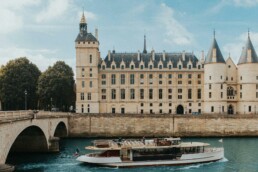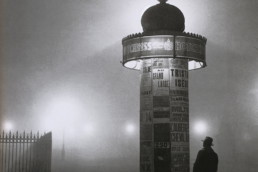In the Paris of the Grand Siècle, as the city shines under the reign of Louis XIV, a precious document emerges in 1676: the plan of Paris by Nicolas de Fer. This plan, like a mirror of the era, captures with precision and elegance the contours and details of the capital, offering a unique glimpse into Parisian life in the 17th century.
Nicolas de Fer, a renowned geographer and cartographer, approaches the task with exemplary rigor. His plan, not just a work of art, is also a valuable tool for contemporaries and future generations. It depicts Paris as a harmonious ensemble of winding streets, lively squares, and majestic monuments. Each district, each building is drawn with a meticulousness that reflects De Fer’s love for his city.

One of the most fascinating anecdotes about this plan concerns the Marais district. At the time, this neighborhood, with its grand townhouses and secret gardens, was the beating heart of Parisian nobility. It is said that in 1676, during a walk through the cobbled streets of the Marais, Nicolas de Fer paused in front of the Hôtel de Sully, admiring its grand architecture. Inspired by the beauty of the place, he is said to have spent hours drawing every detail, capturing the very essence of this Parisian jewel.
The 1676 plan of Paris is not just a map; it is an open window to the past. Walking through the streets traced by De Fer, one can almost hear the echoes of carts rolling over the cobblestones, the calls of merchants at the Halles, and the hushed conversations of promenaders along the Seine. Another anecdote tells how, on a summer evening, a group of friends got lost in the city’s maze while following De Fer’s plan, rediscovering forgotten corners and hidden treasures of Paris. Their adventure was immortalized in a diary, which has since become a precious testimony of Parisian life.
The Saint-Germain-des-Prés district, with its abbey and literary cafés, also holds a prominent place on Nicolas de Fer’s plan. In 1676, this neighborhood was already a hub of culture and thought. It is said that one evening, while De Fer was working on the details of this area, he was approached by a young poet seeking glory. This young man, curious to know what De Fer was doing, spent the evening by his side, exchanging verses and ideas. This poet, who later became famous, often mentioned in his writings this fortuitous encounter that had nourished his imagination.
Finally, Nicolas de Fer’s plan of Paris is a living work, an invitation to discovery. Its margins are adorned with panoramic views and detailed legends, offering a visual journey through time. Each street corner, each monument is an open door to a story, a moment frozen in eternity. An urban legend tells of a collector, passionate about old maps, who spent years searching for an original copy of De Fer’s plan. When he finally found it, he declared that he felt he was holding not just a simple document, but a part of Paris’s soul.
Thus, the 1676 plan of Paris, drawn by Nicolas de Fer, remains a precious testimony of the splendor of the capital in the 17th century. Through its delicate tracings and detailed care, it transports us to a bygone Paris, yet always alive in our memories. Each look at this plan is a plunge into history, a walk through time where one can rediscover, with wonder, the secrets and beauties of the City of Light.
Lire également :
11 November 2024
A Haven of Peace in the Heart of Paris: The Île Saint-Louis
11 November 2024
The Conciergerie of Paris
11 November 2024
The Seine: The Elegant Lifeline of Paris
5 November 2024
Through the Veils of Creation: CHANEL and the Paris Opera
5 November 2024
The Pantheon: A Republican Sanctuary in the Heart of Paris
29 June 2017
Molitor: The Dawn of the Bikini in Paris
21 June 2017
The History of the Morris Columns in Paris
23 April 2017











